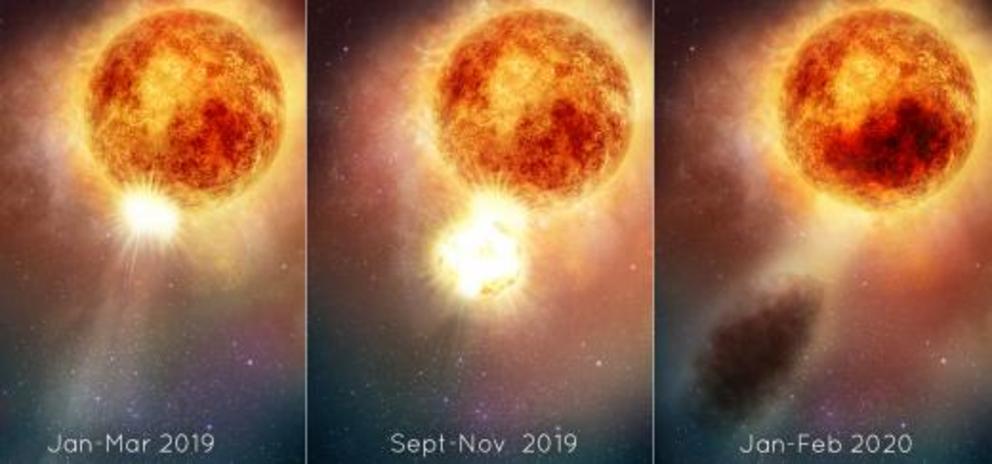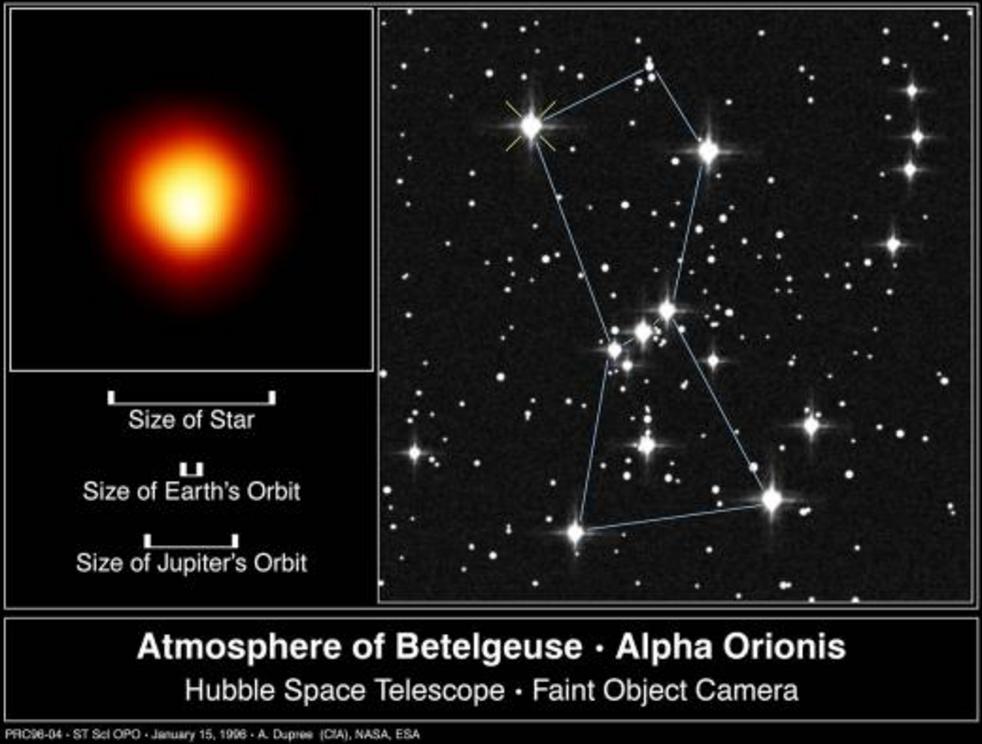What just happened to Betelgeuse?
THE PERSEID METEOR SHOWER: Perseid meteor rates are swiftly increasing as Earth approaches a dense stream of debris from parent Comet Swift-Tuttle. If forecasters are correct, the shower will peak on Aug. 12-13, almost perfectly coinciding with a Full Moon. Bright moonlight will overwhelm many faint meteors, but there should still be plenty of Perseid fireballs. Enjoy the show: observing tips, photo gallery.
A NEW TYPE OF SPACE WEATHER--THE "SME": You've heard of a CME, a "coronal mass ejection." They happen all the time. A piece of the sun's tenuous outer atmosphere (corona) blows off and sometimes hits Earth. Something far more terrible has happened to Betegeuse. The red giant star produced an SME, or "surface mass ejection."

Above: An artist's concept of an SME on Betelgeuse. Credit: Elizabeth Wheatley (STScI)
NASA astronomers believe that in 2019 a colossal piece of Betelgeuse's surface blew off the star. The mass of the SME was 400 billion times greater than a CME or several times the mass of Earth's Moon. Data from multiple telescopes, especially Hubble, suggest that a convective plume more than a million miles across bubbled up from deep inside the star, producing shocks and pulsations that blasted a chunk off the surface.
"We've never before seen such a huge mass ejection from the surface of a star," says Andrea Dupree of the Harvard-Smithsonian Center for Astrophysics, who is leading the study. "Something is going on that we don't completely understand."
After it left the star, the SME cooled, forming a dark cloud that famously dimmed Betelgeuse in 2019 and 2020. Even casual sky watchers could look up and see the change. Some astronomers worried that the dimming foreshadowed a supernova explosion. The realization that an SME is responsible has at least temporarily calmed those fears.

Above: A Hubble image of Betelgeuse located in the shoulder of Orion.
Betelgeuse's brightness has since returned to normal, but something strange is still going on. Astronomers have long known that Betelgeuse is a variable star with a 430-day period. Its metronome-like change in brightness has been observed for more than 200 years. As Betelgeuse recovers, however, those pulsations are no longer regular: See the data. Spectra taken by Hubble and the Tillinghast telescope in Arizona imply that years later the surface of Betelgeuse is still bouncing like a plate of gelatin dessert--a testament to the ferocity of the blowout.
Betelgeuse is so large that if it replaced the sun at the center of our solar system, its atmosphere would extend past Jupiter. Dupree used Hubble to resolve hot spots on the star's surface in 1996. This was the first direct image of a star other than the sun.
What's happening now "is a totally new phenomenon that we can observe directly and resolve surface details with Hubble," says Dupree. "We're watching stellar evolution in real time."
